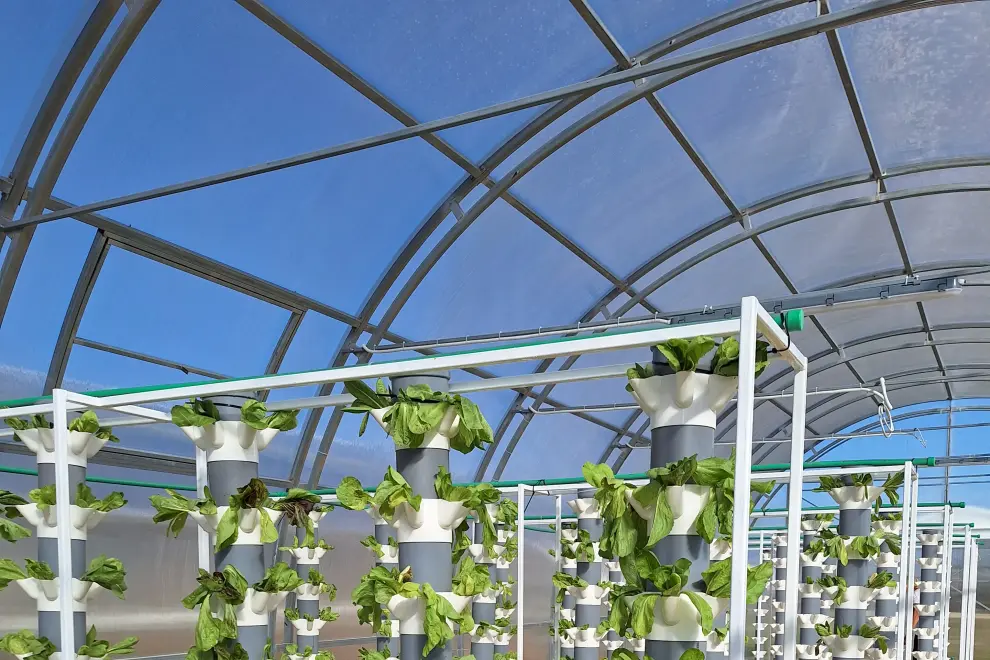First aquaponics greenhouse set up in Prekmurje
An aquaponics greenhouse has been set up at a model farm near Lendava in the northeast of the country that will grow 9,000 heads of lettuce per month and five to six tonnes of fish per year. The project initiator says it is the first such facility in Europe.
The greenhouse in Banuta, a small village near Lendava, is not yet fully functional because it is still waiting to receive the newest vertical plant cultivation equipment from Malaysia but its initiator Jože Meh expects it to be up and running soon.
The model farm where the green house is located is operated by an organisation of the Hungarian ethnic minority in the region, called the Pomurje Hungarian Self-Governing Community.
Given the climate conditions, excessive use of pesticides and dependence on imports, Meh sees aquaponics as a solution to improve self-sufficiency and provide for a healthy diet of fish and vegetables.
He told reporters that no pesticides, artificial fertilisers or chemicals would be used in the new greenhouse.
 An aquaponics greenhouse opens at a model farm in Banuta near Lendava. Photo: STA
An aquaponics greenhouse opens at a model farm in Banuta near Lendava. Photo: STA
Aquaponics is a sustainable way of growing food in a greenhouse, combining fish farming and vegetable production. Fish produce ammonia through faeces and food scraps, which is toxic and must be removed from the tank.
The ammonia then passes through an organic filter along with water, which contains bacteria that feed on the ammonia and convert it into nitrates. These are then used as fertiliser for the vegetables.
The plants use up the nitrates and filter the water, which returns to the fish tank through a circulatory system. Water circulates constantly throughout the entire process. This means the greenhouse uses up to 95% less water than other systems, Meh said.
While quite widespread in America and Australia, aquaponics is still in its early stages in Europe. Meh believes that their project and other similar ones will pave the way for such systems being used more widely.
The new agricultural method has been presented to students from local high schools as part of their curriculum.
Apart from the aquaponics greenhouse, the 29-hectare model farm also features asparagus and berries plantations. It also breads donkeys, horses, the Krškopolje pigs, which is a breed originating in Slovenia, Mangalica pigs, and Hungarian grey cattle.
Elizabeta Bojnec, the head of the model farm project, says they are also planning to set up a sorting and packing room to process asparagus and berries, a herb garden and an outdoor classroom. They are considering adding accommodation facilities as well.


